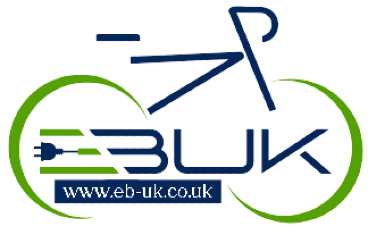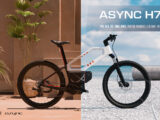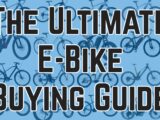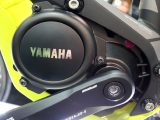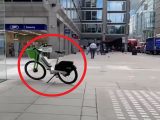
The Different Types of E-bike Motors Explained
November 20, 2022E-Bikes have come a long way in recent years and are now a staple for transport and sporting. The main factor that differentiates an e-bike from an electric motorcycle is that an e-bike specialises in pedal assist and refrains from powering the wheels without pedal input from the rider.
There are separate classes of e-bikes which limit the amount of power depending on the input, but that is a discussion for another place. All UK-compliant e-bikes available today make use of brushless motors as they require less maintenance and can be made in a compact format, plus they are more efficient on power draw than the conventional brushed DC motors. The main factor differentiating the brushless motors used in e-bikes today is how the power is applied…
Mid-Drive
A mid-drive motor is where the motor is located on the main shaft between the pedals, or the pedal crank. This allows the motor to supply power directly at your pedal point and turns the wheels. Supplementing the power before the chain drive allows the mid-drive motor to have a much easier layout and lets the bike retain a better weight distribution.
The majority of mid-drive motors have an internal gearbox to allow the motor to perform at high RPM while still supplying the rider with a pedal-friendly speed. There are advantages and disadvantages to supplying power at this stage.
Advantages
Gearing – Supplying power at the pedal stage means that the motor is subject to your gearing, giving the rider much more control over the perceived power and torque. This is especially advantageous when riding a lot of steep hills which require lower gearing, in turn, more torque.
Mass – Having the motor and its battery pack located at a low centre of gravity in the middle of the bike allows a much better weight distribution and balance.
Disadvantages
Braking – Motors located on the back wheel can make use of regenerative braking, mid-drive motors cannot. While this is not an issue on short rides, on longer rides, regenerative braking can make a noticeable difference to battery life.
Chain wear – With the power being supplied at the pedals, the drive chain will also undergo extra load, making the drive chain wear out quicker and be a considerable failure point. With extra preventative maintenance, this should be avoidable but is worth noting for older bikes.
Geared Hub Motors
A hub motor and in this case a geared hub motor is an arrangement where the motor sits inside the hub of the rear wheel, treating the rear axle as a drive shaft to assist you in pedalling the bike. The motors and controllers used are the same as in mid-drive, it is only the placement and gearing that varies. This placement does come with some advantages and disadvantages, though.
Advantages
Braking – Being placed on the back wheel allows the hub motor to make use of regenerative braking. This allows you to reclaim some spent energy while braking, opposed to just wasting it to heat.
Reliability – Being placed in the rear wheel, there is no extra wear being placed on your normal pedal drivetrain. No additional stress means a chain and sprockets which should last longer, even in poor conditions outdoors.
Disadvantages
Gearing – While the geared hub motor does have internal gears to better match the wheel speed of the bike, your physical gearing on the bike will have no effect on the gearing of the motor. While still usable, this arrangement will yield less torque than a motor which uses the bike’s own gearing.
Weight – A hub-mounted motor will not weigh any more than a mid-drive motor but does have the weight completely added to the back (or front) of the bike, making for a worse weight distribution.

Other
There are other drive mechanisms like a friction drive which powers the surface of the wheel. This however is inefficient compared to the drives we have discussed here and probably best avoided when buying a new e-bike, but we do hope you have a better understanding of the main types.
If you have any questions about which motor type is right for you do let us know in the comments below.



